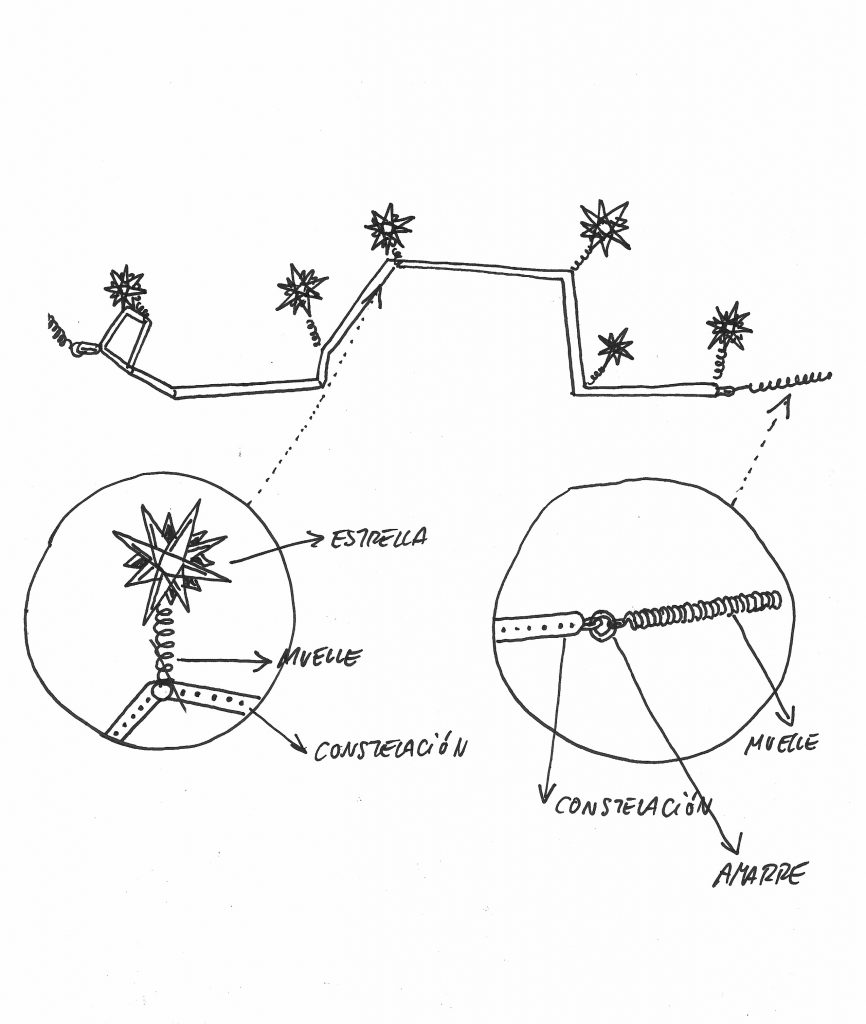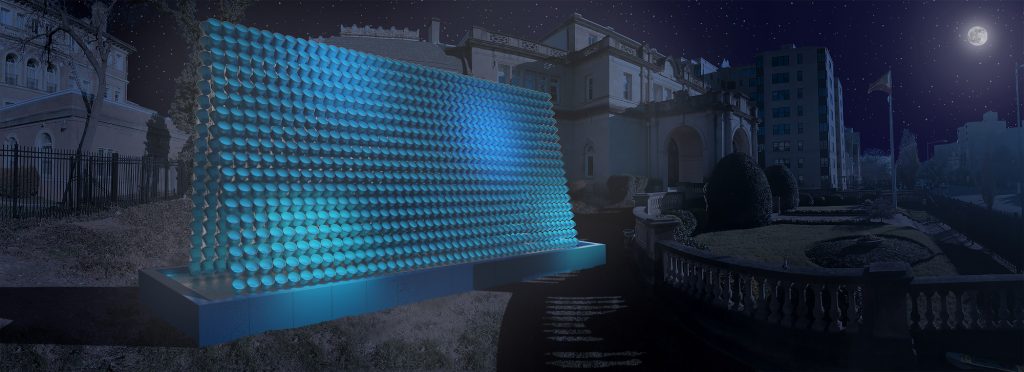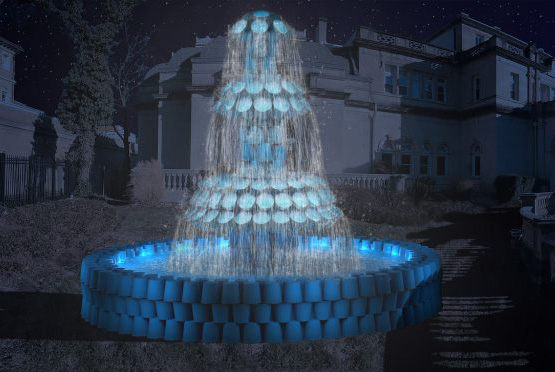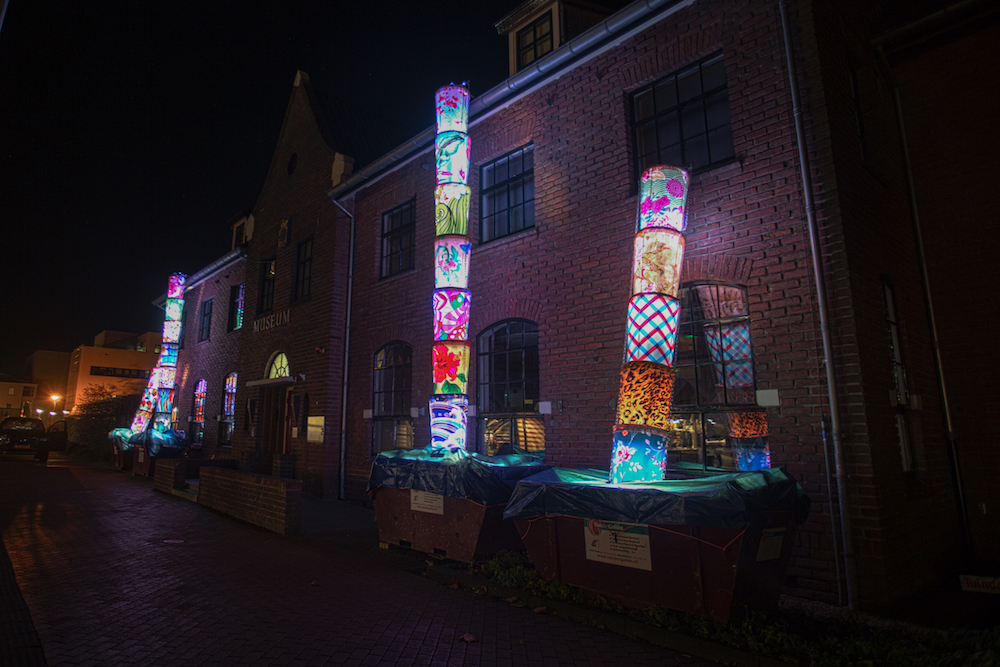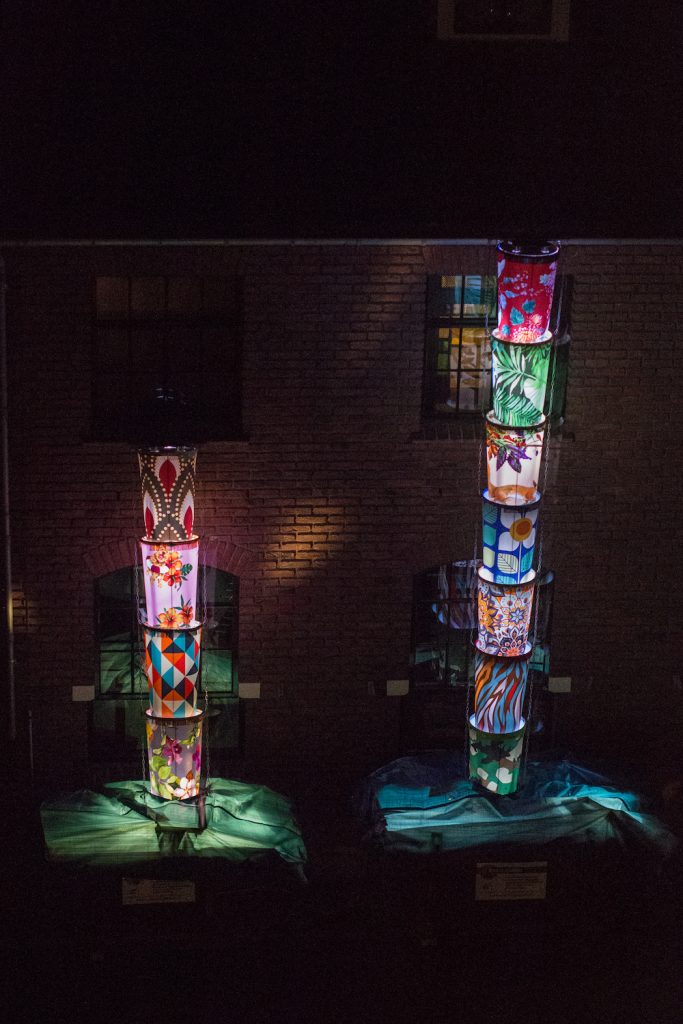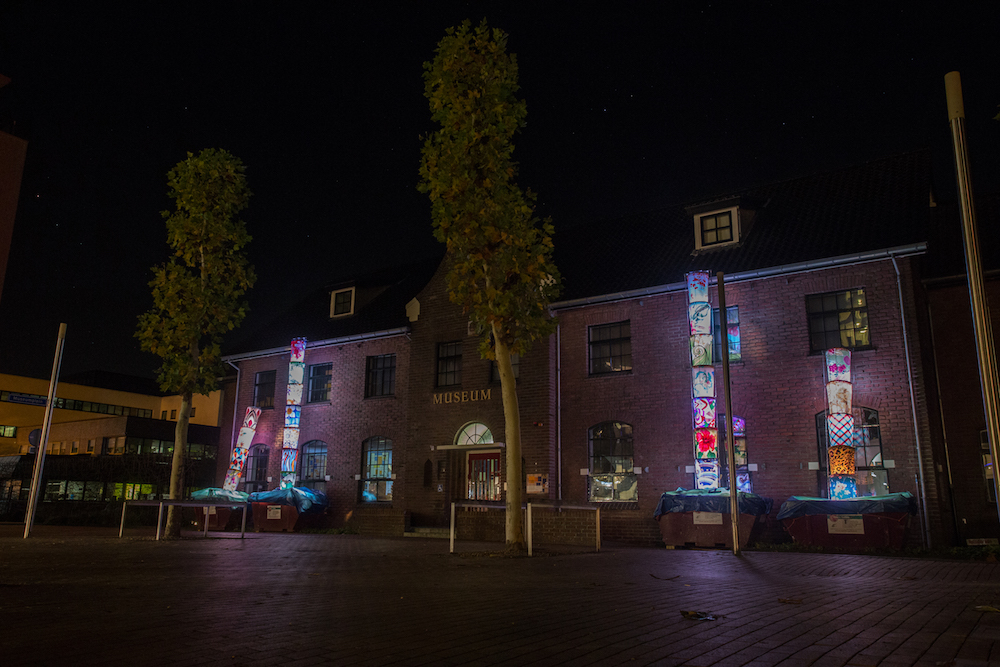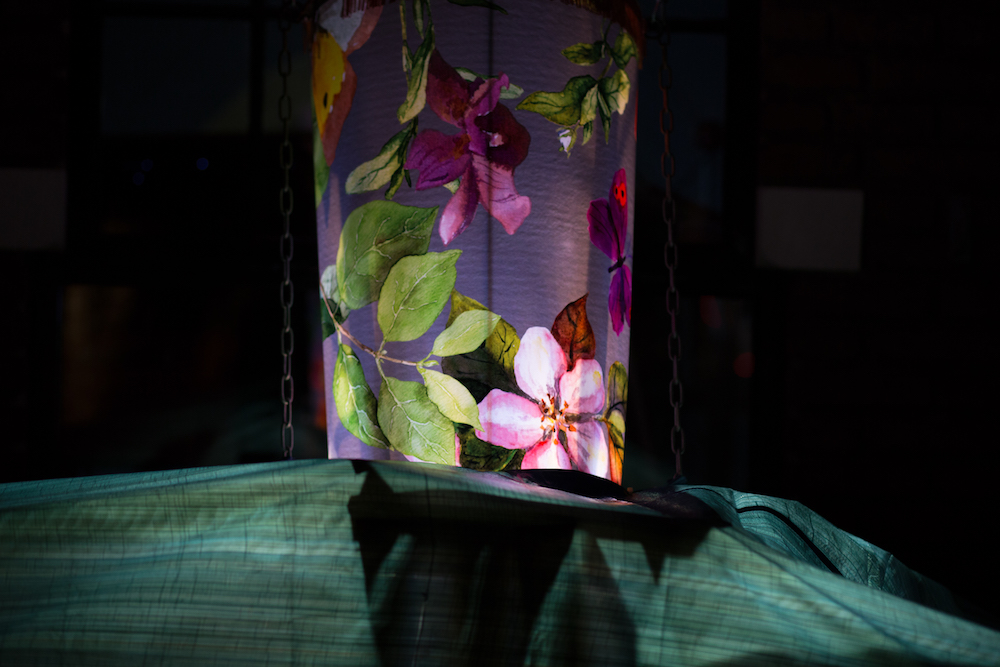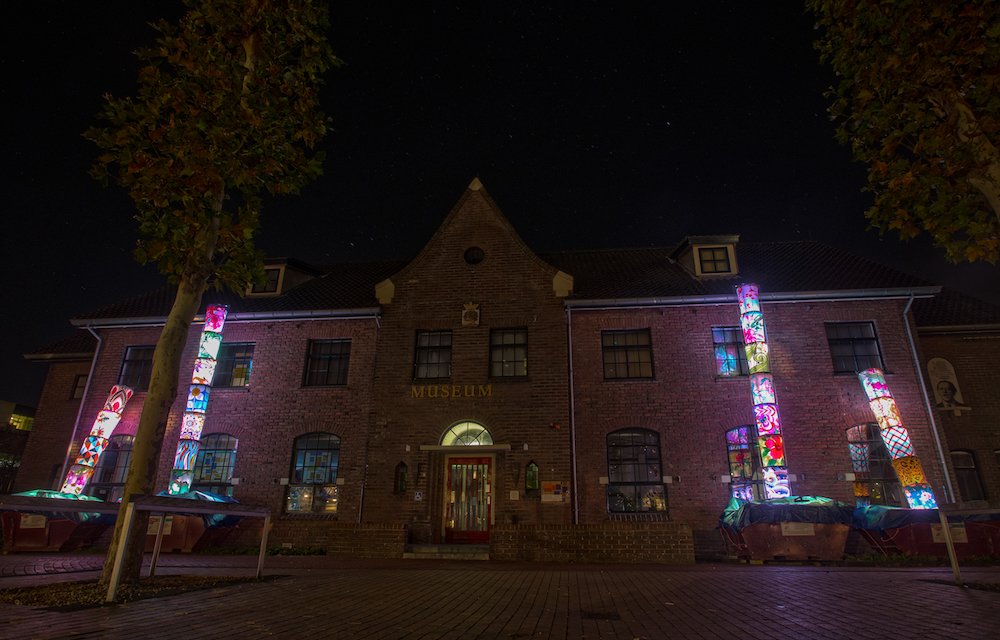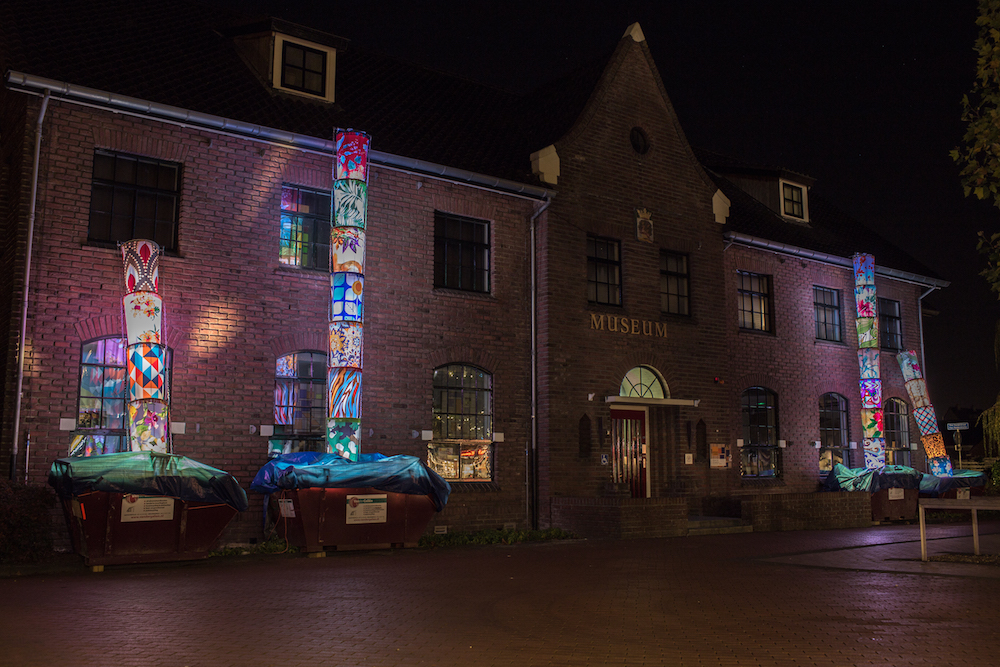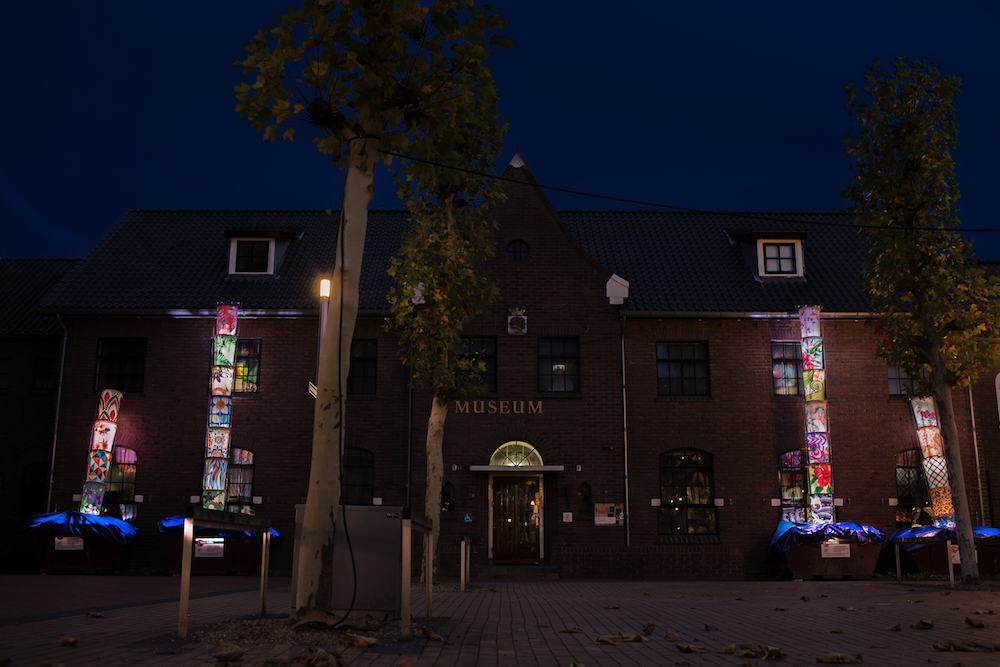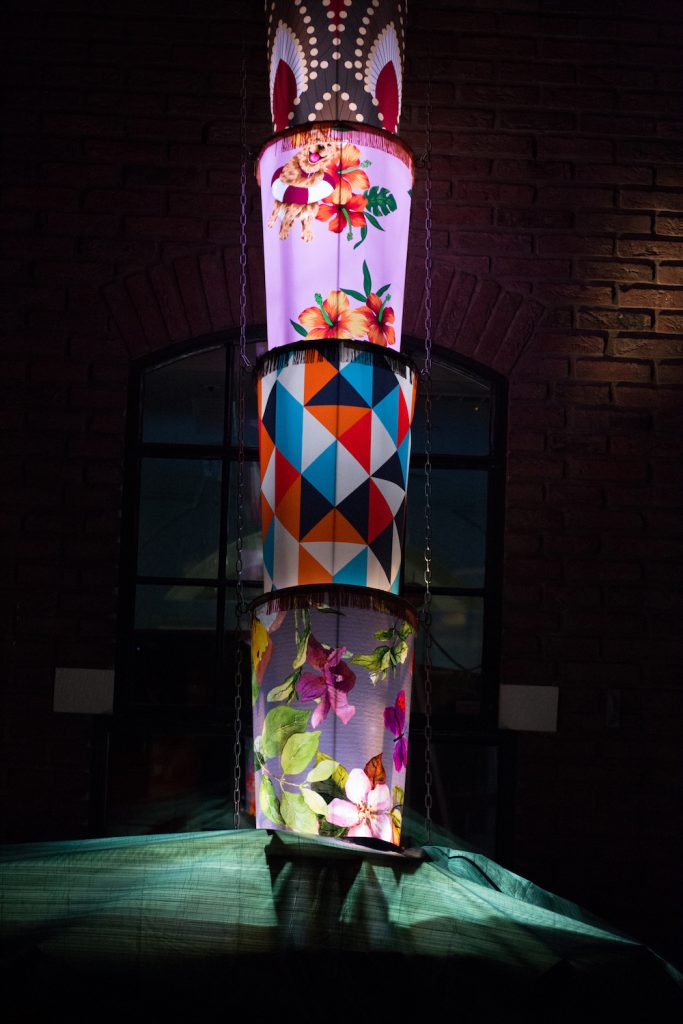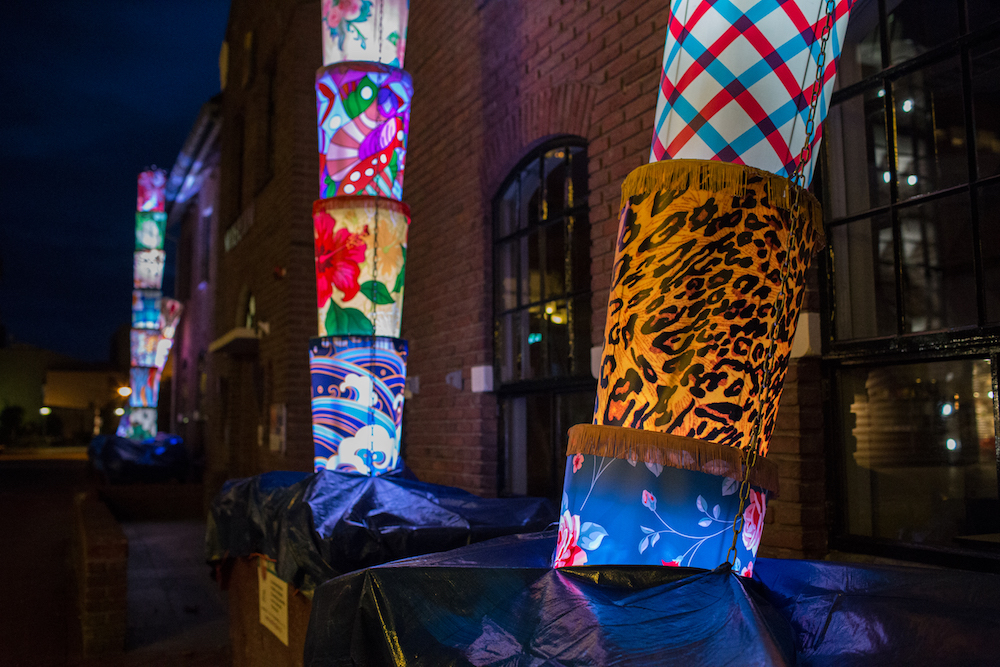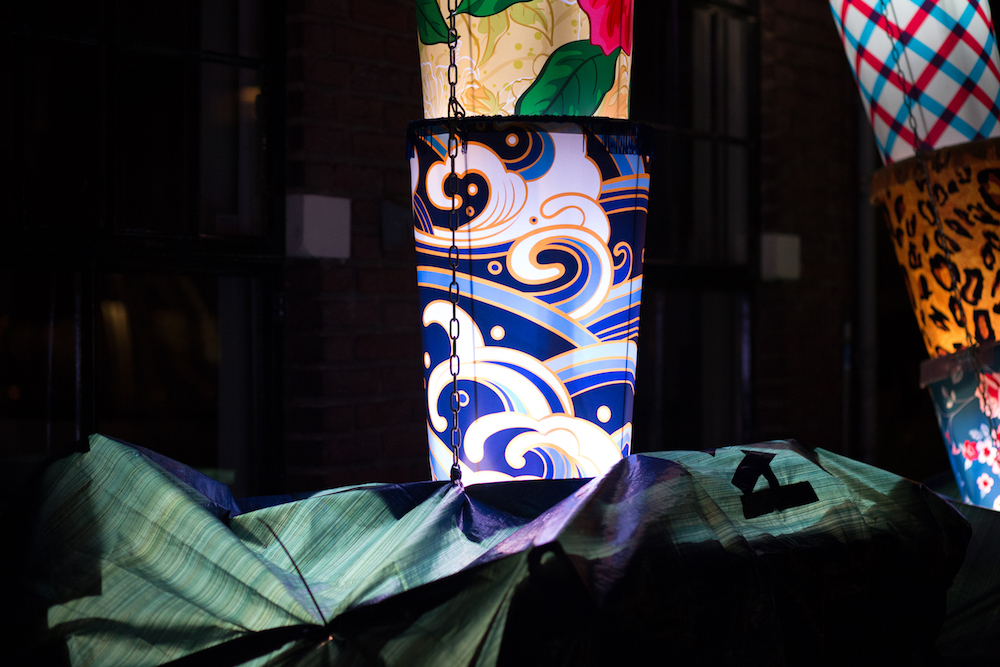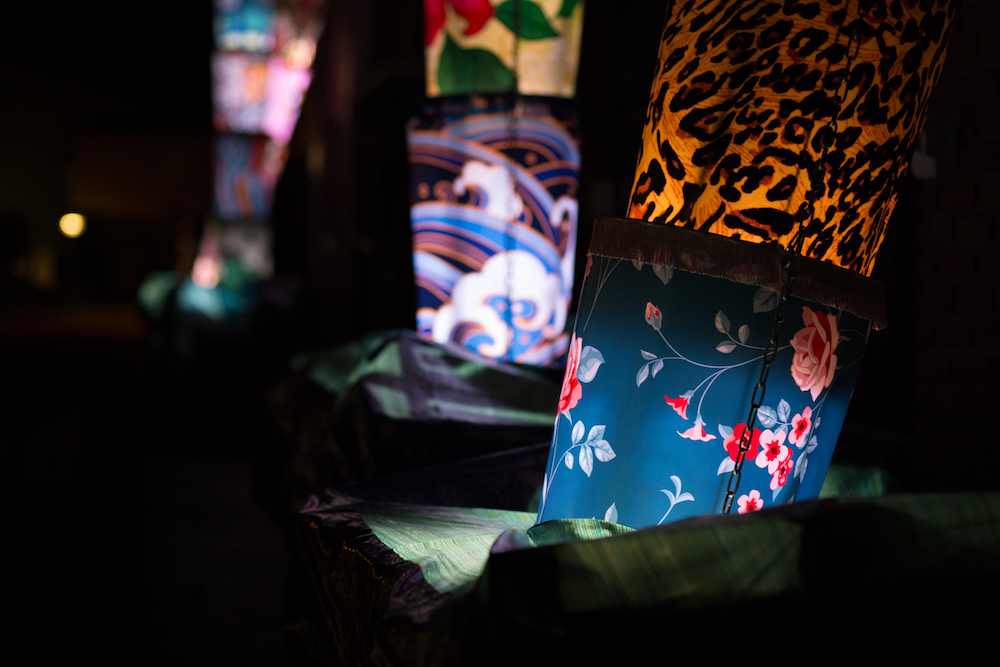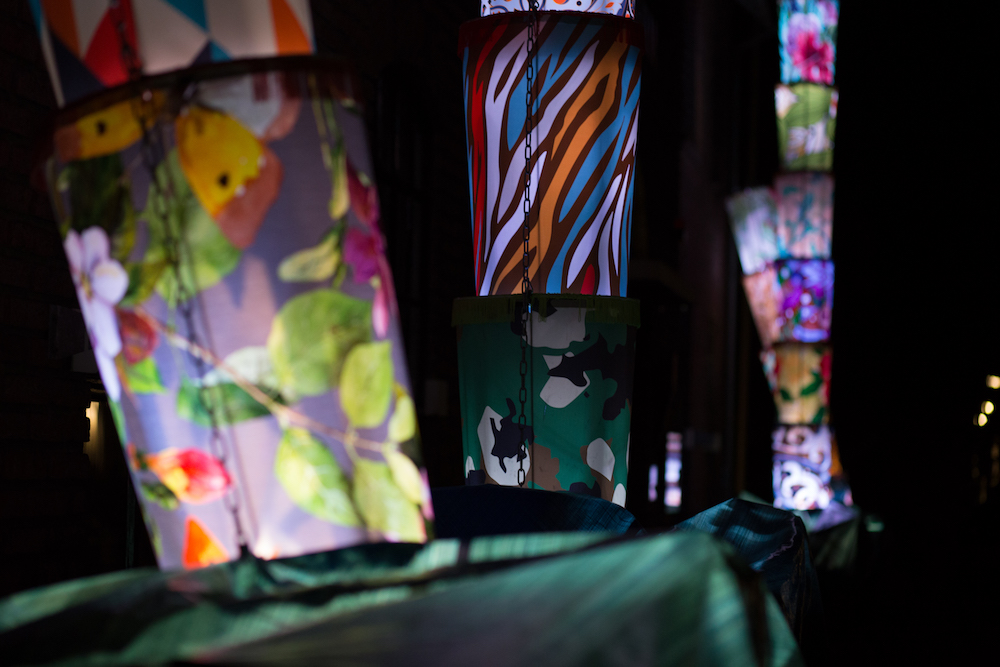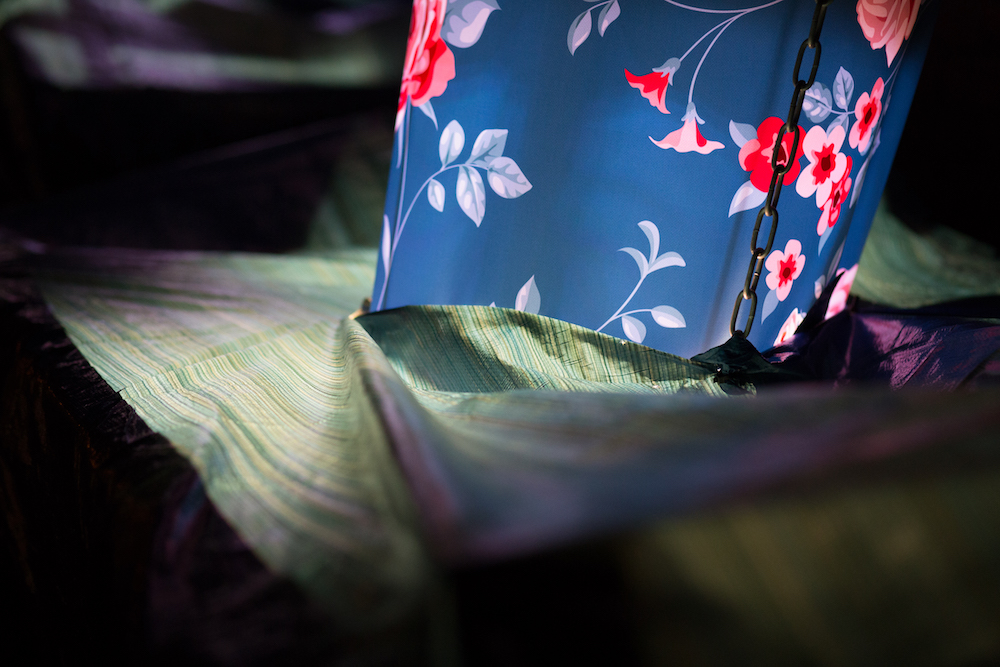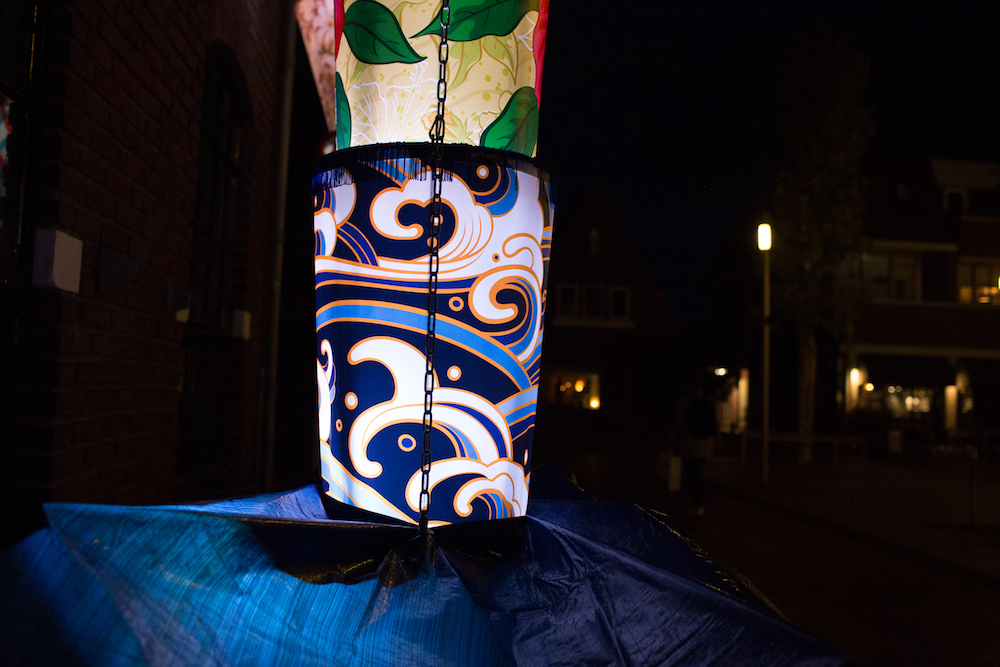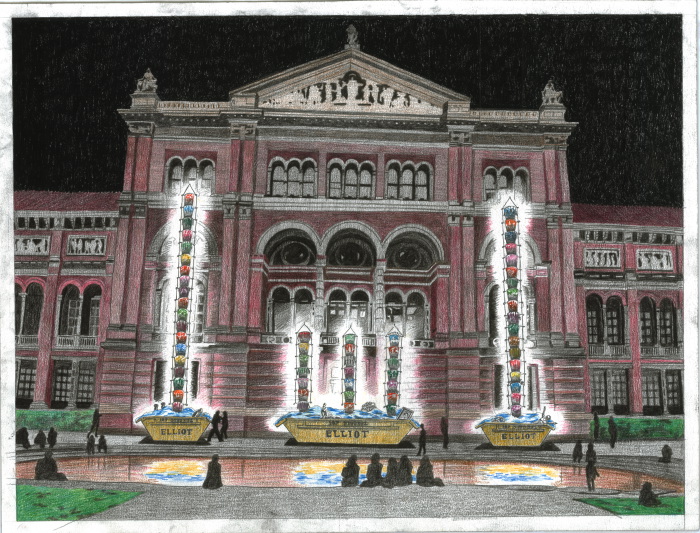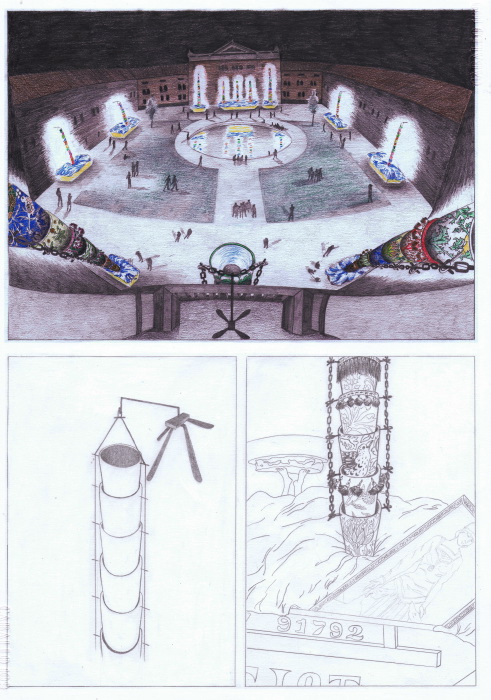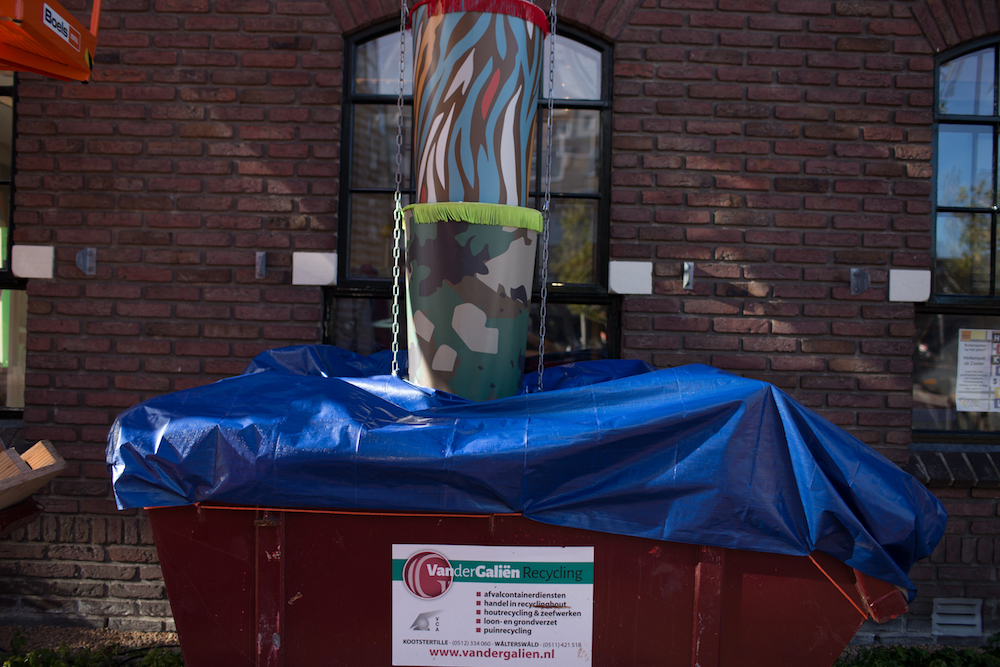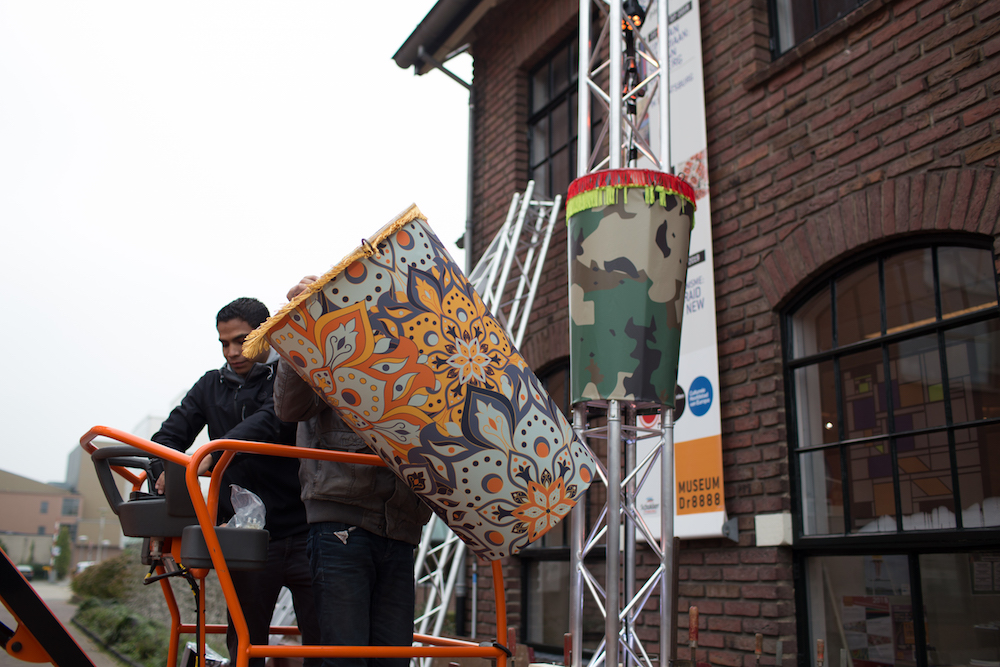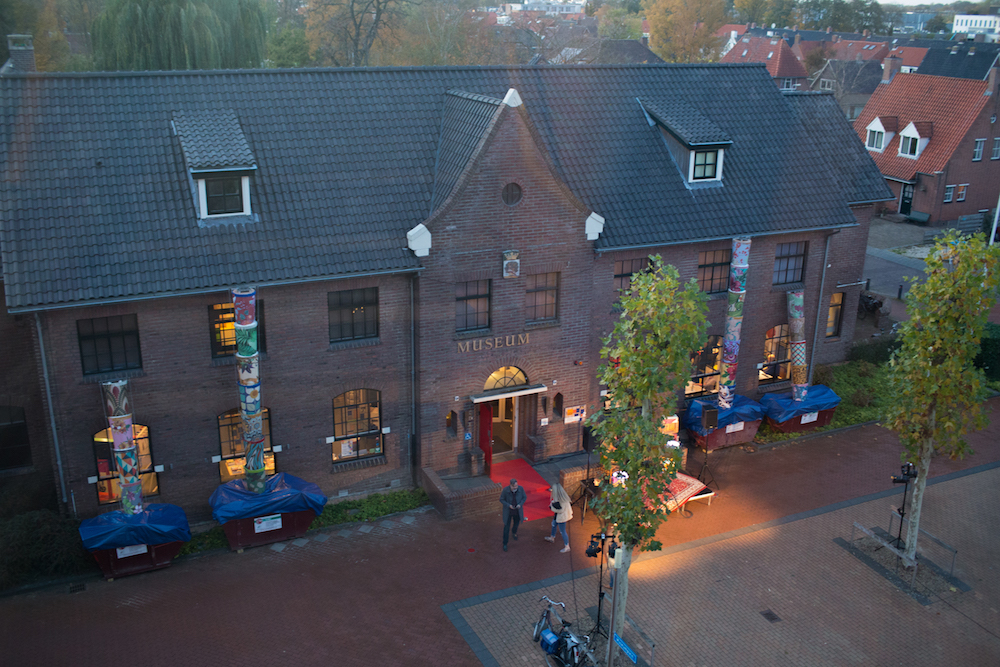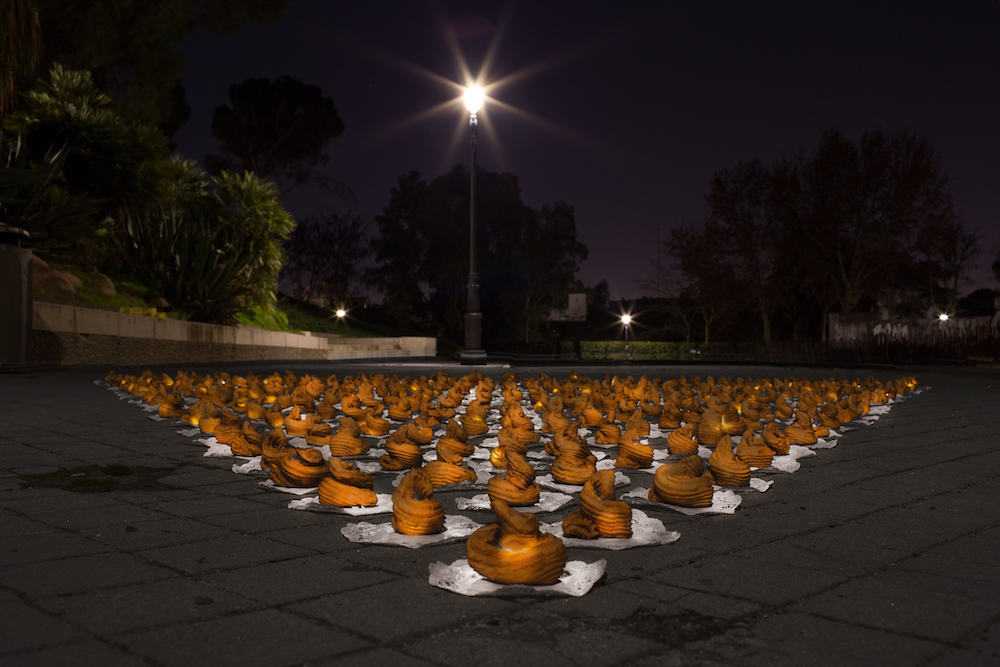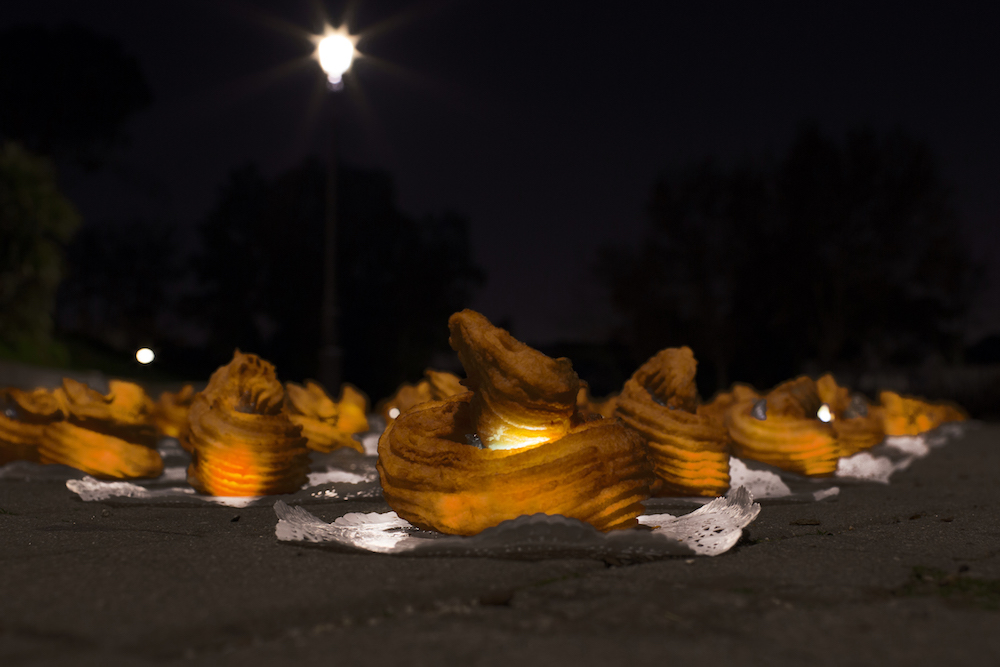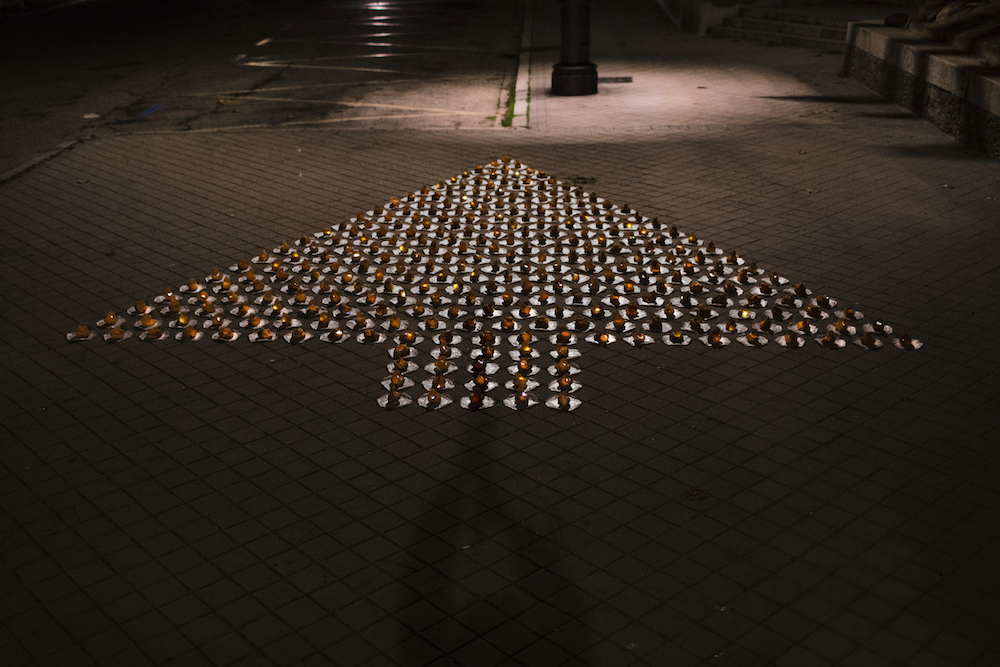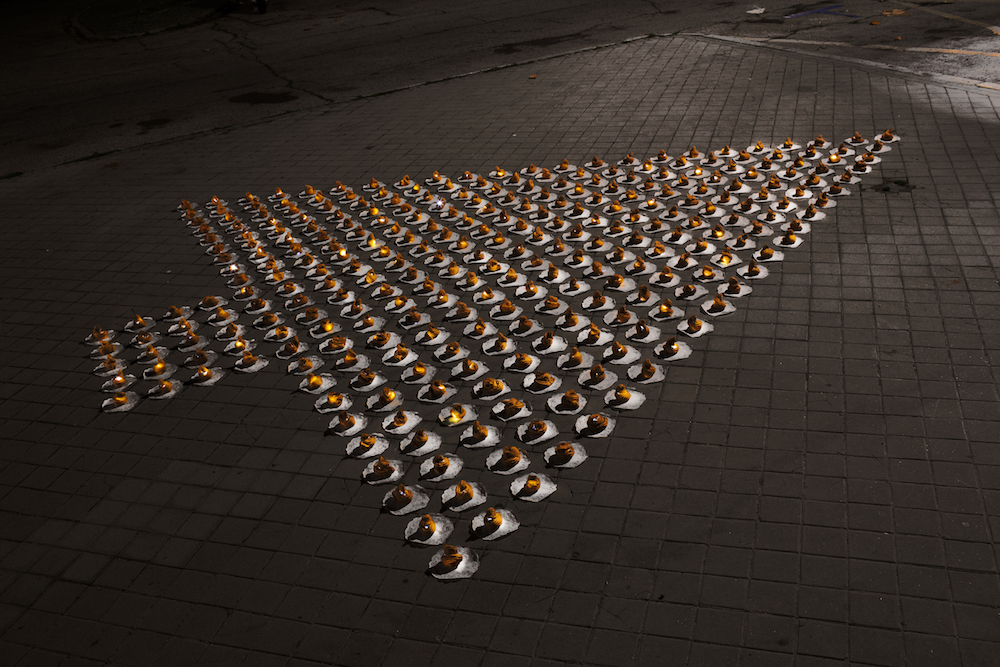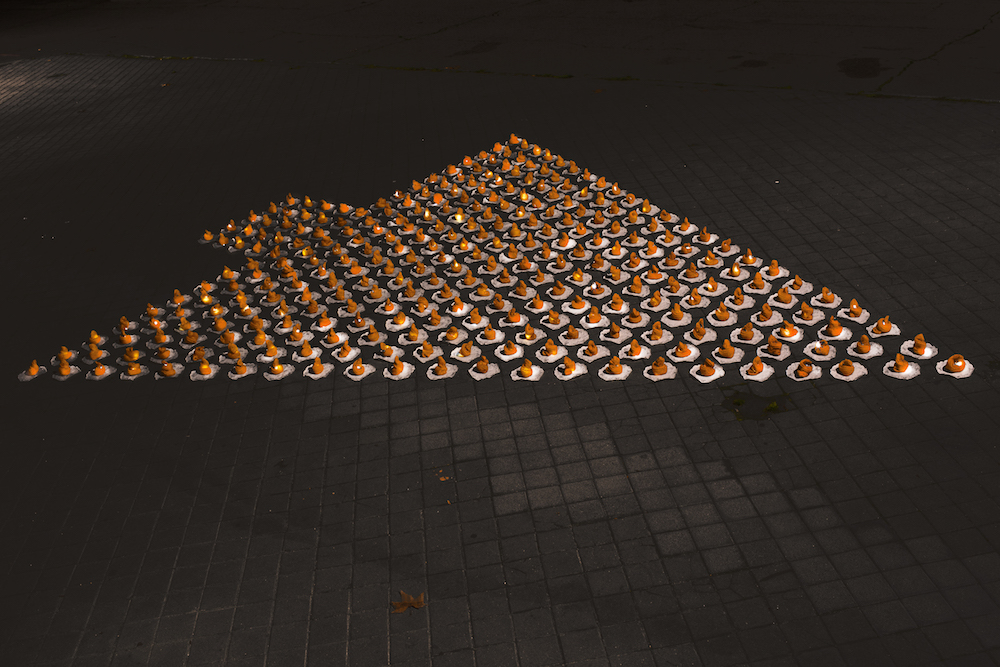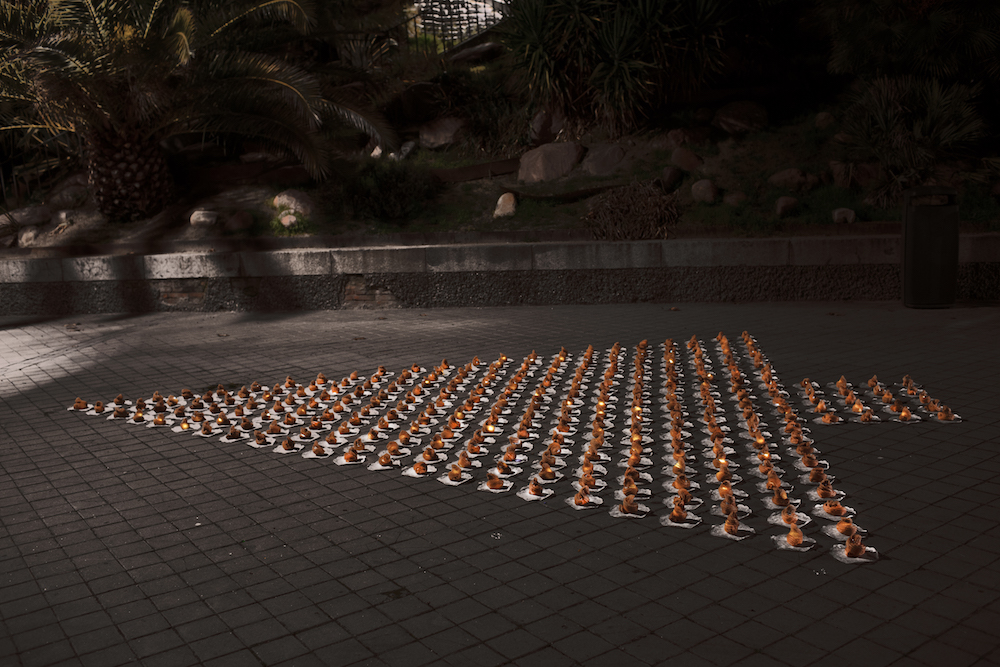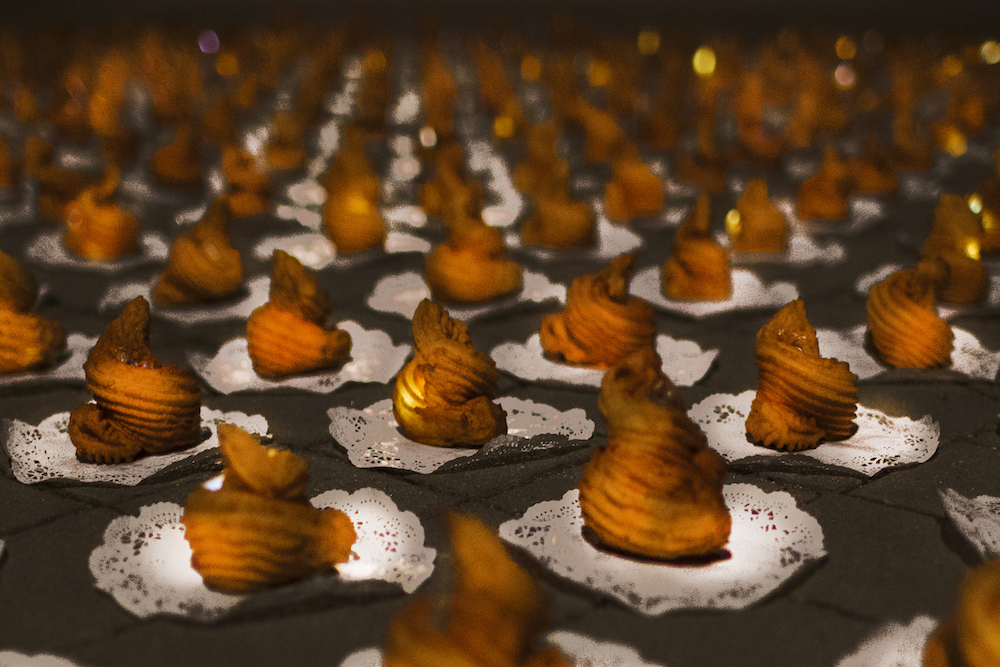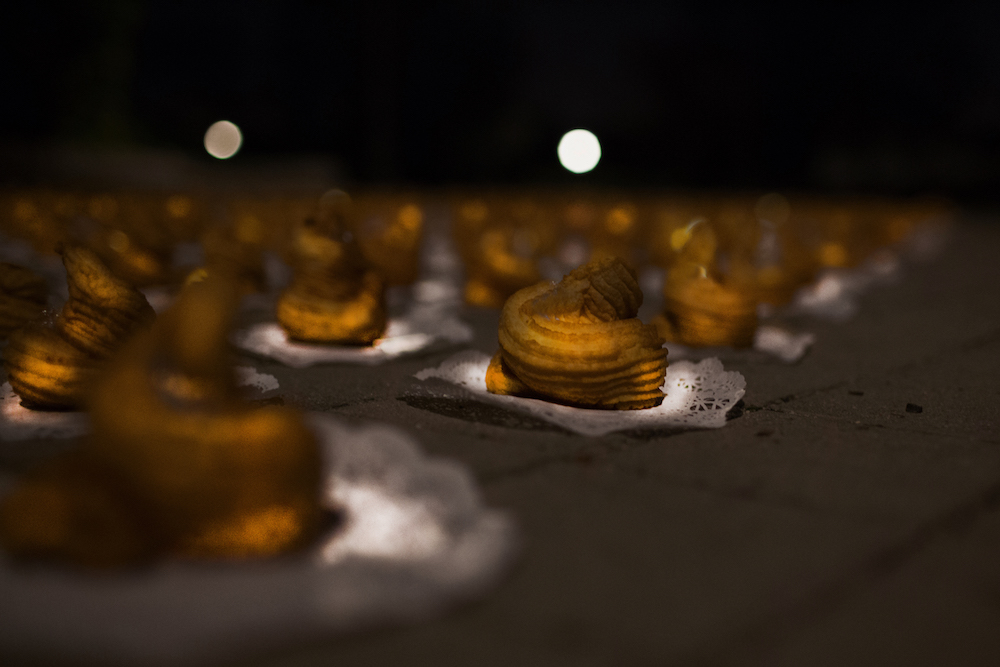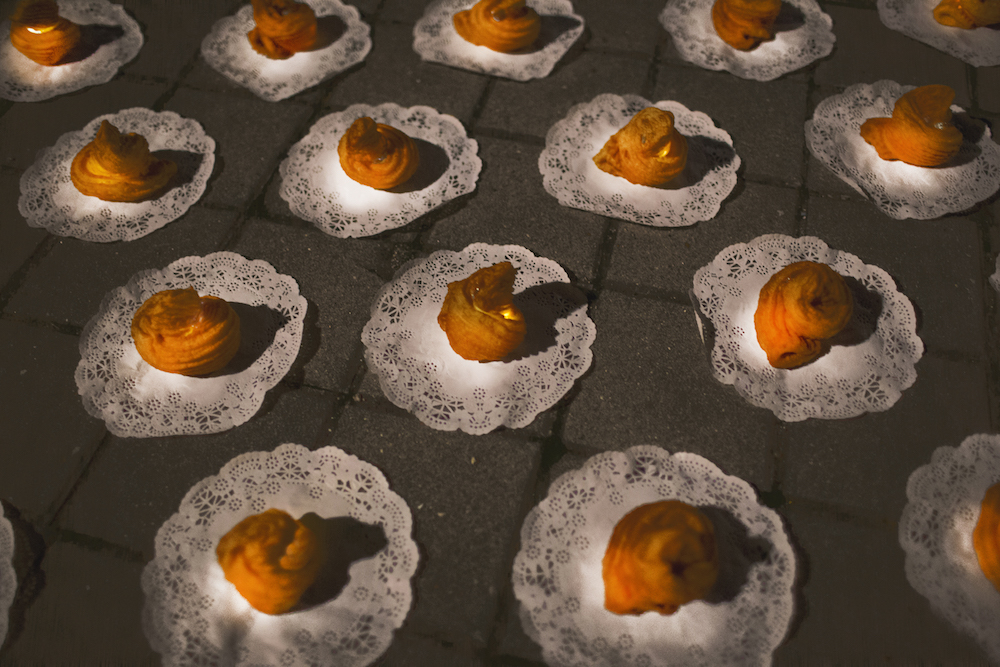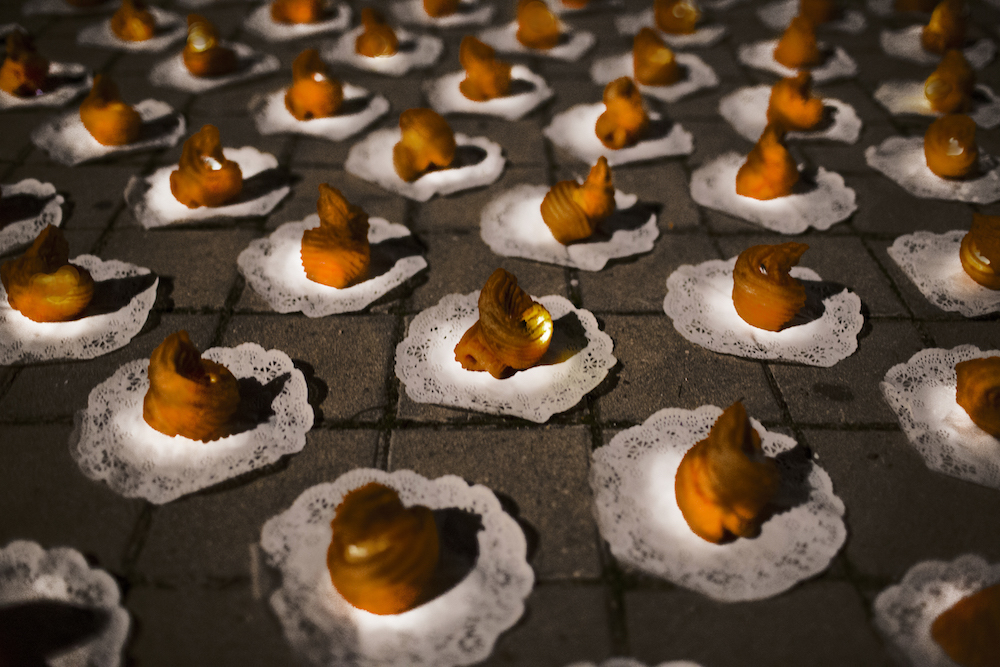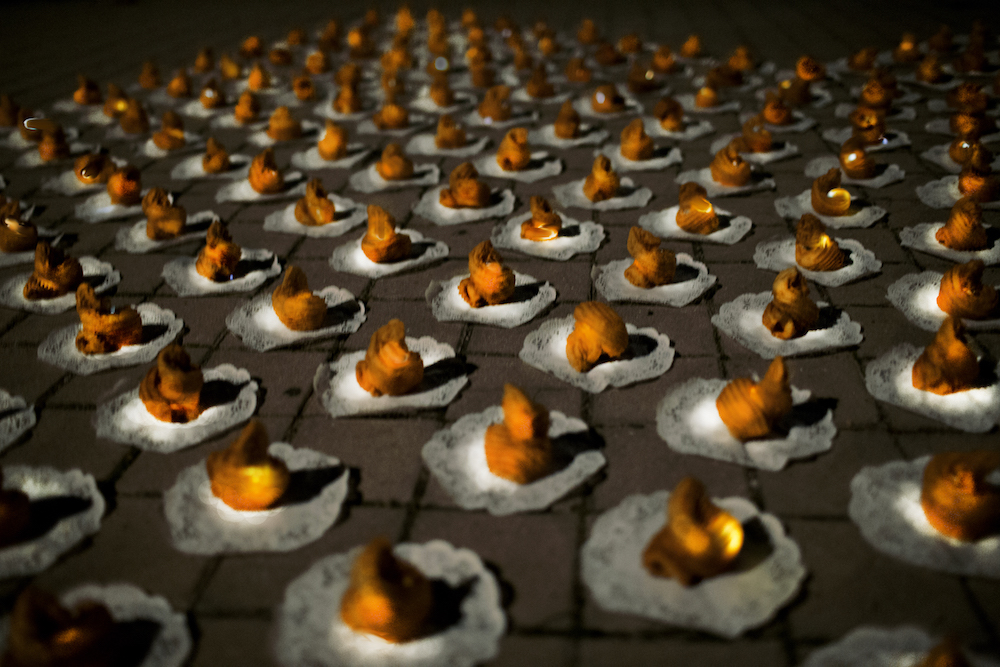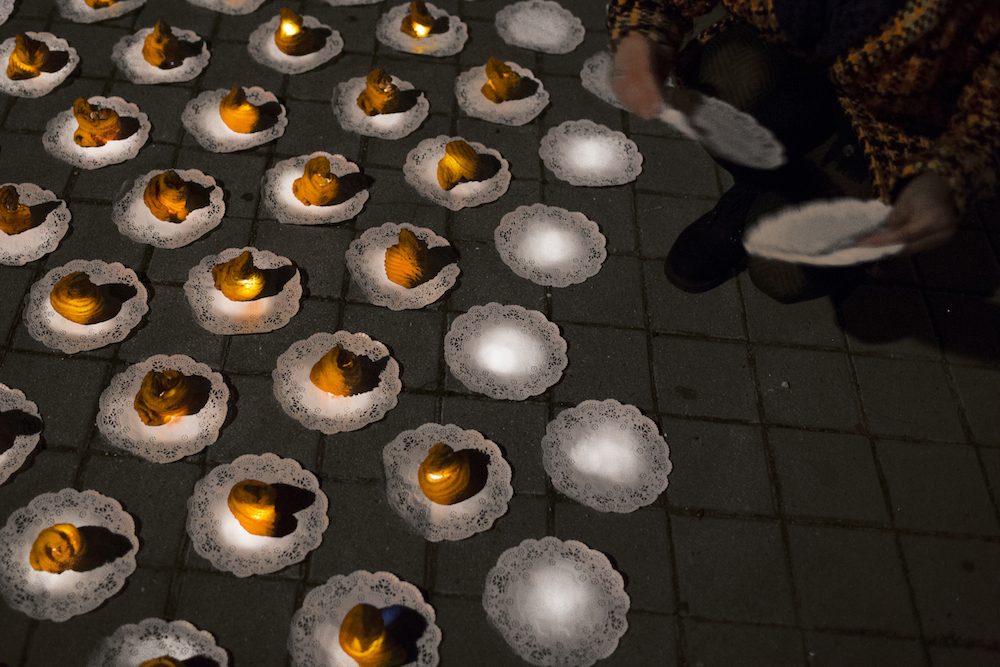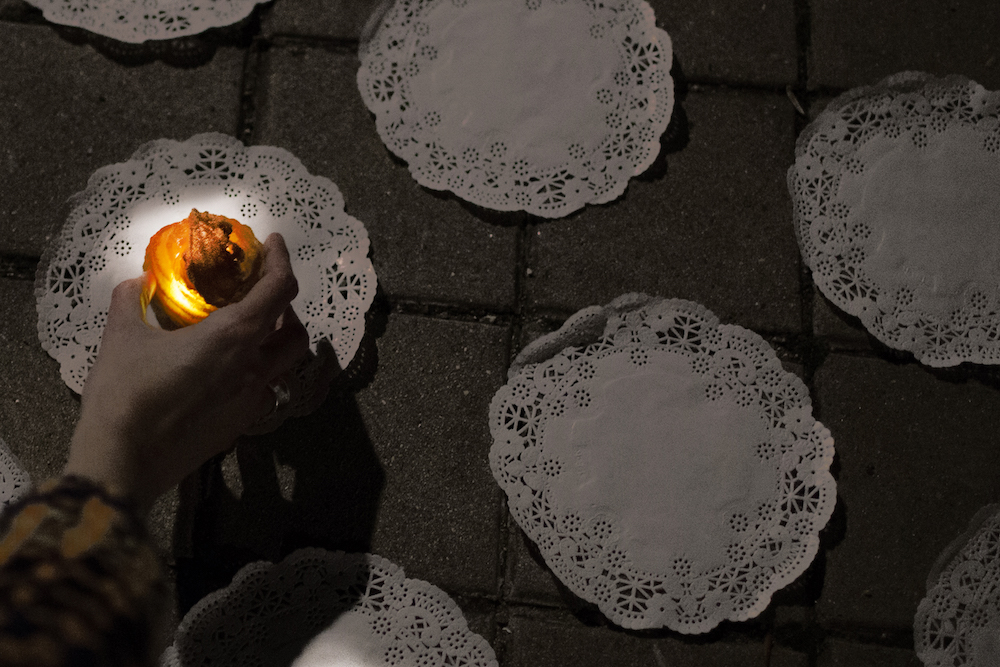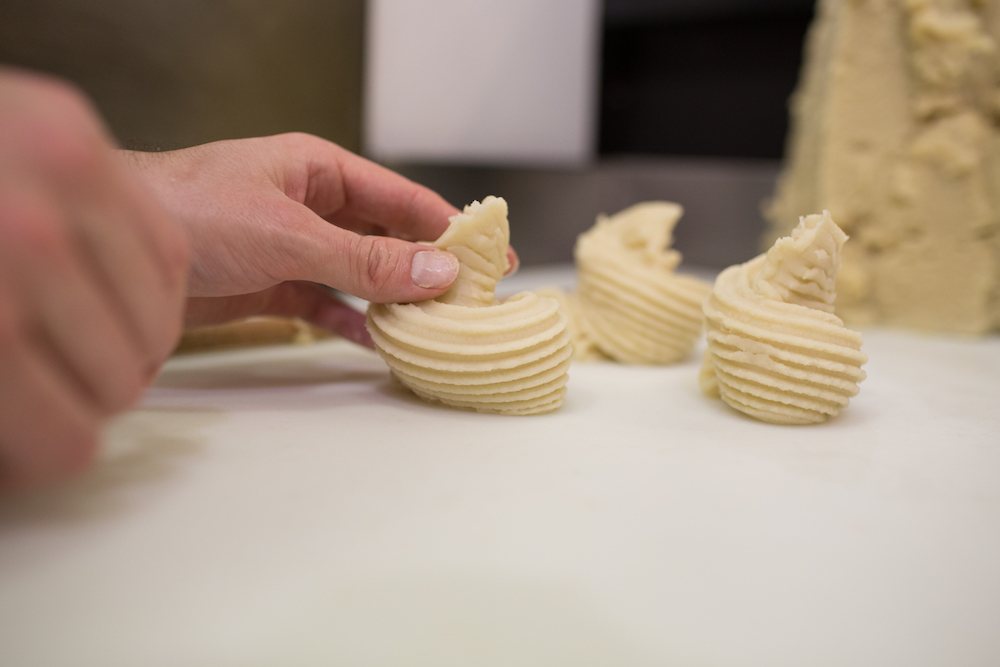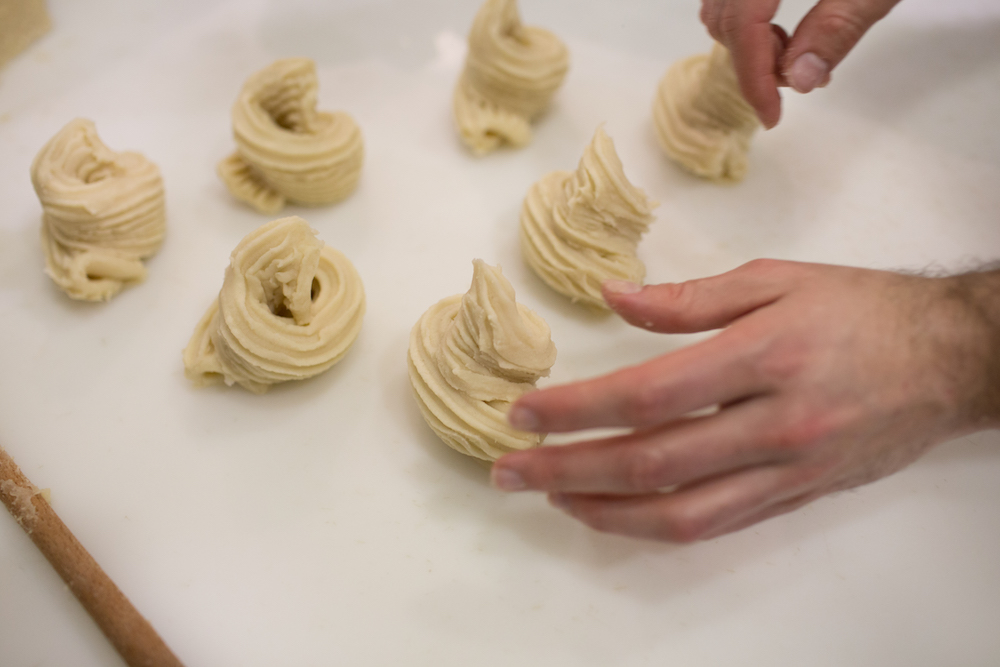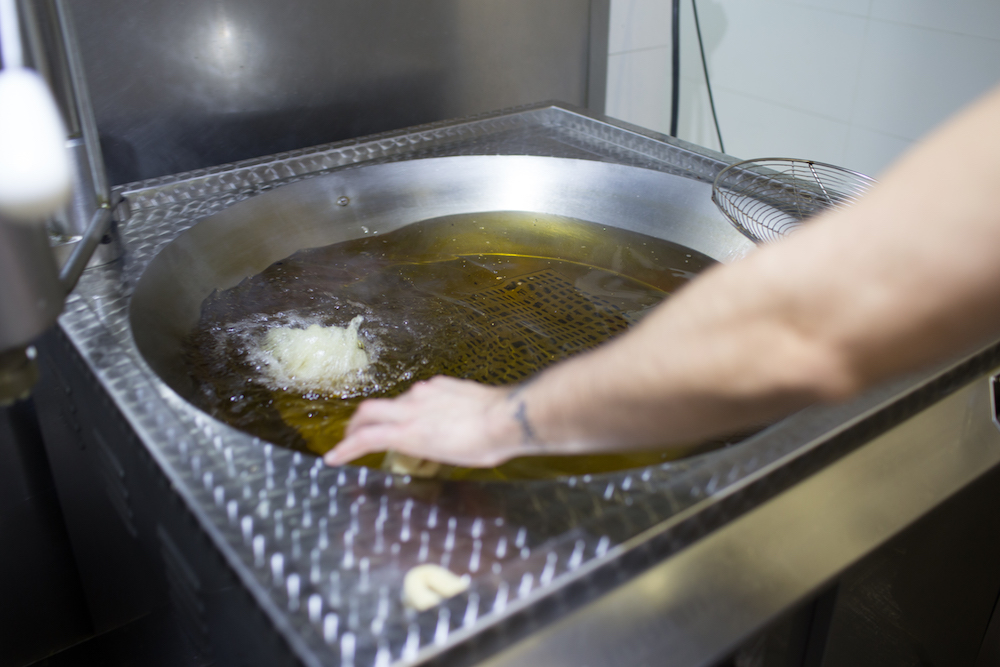Plastic Vomit / Vómito de plástico

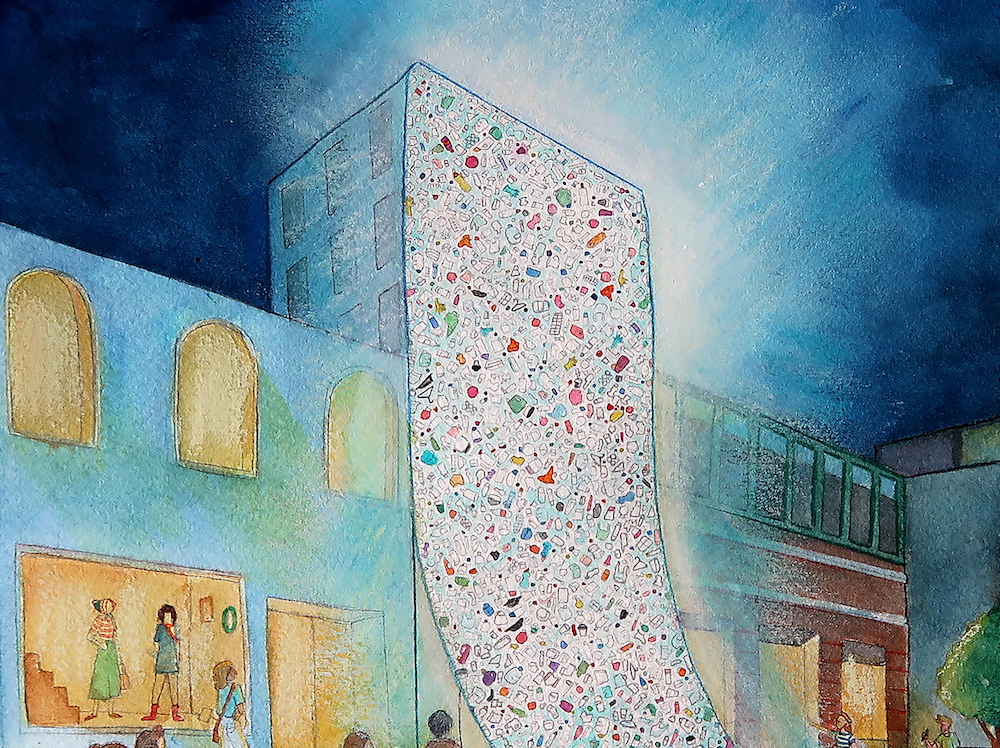


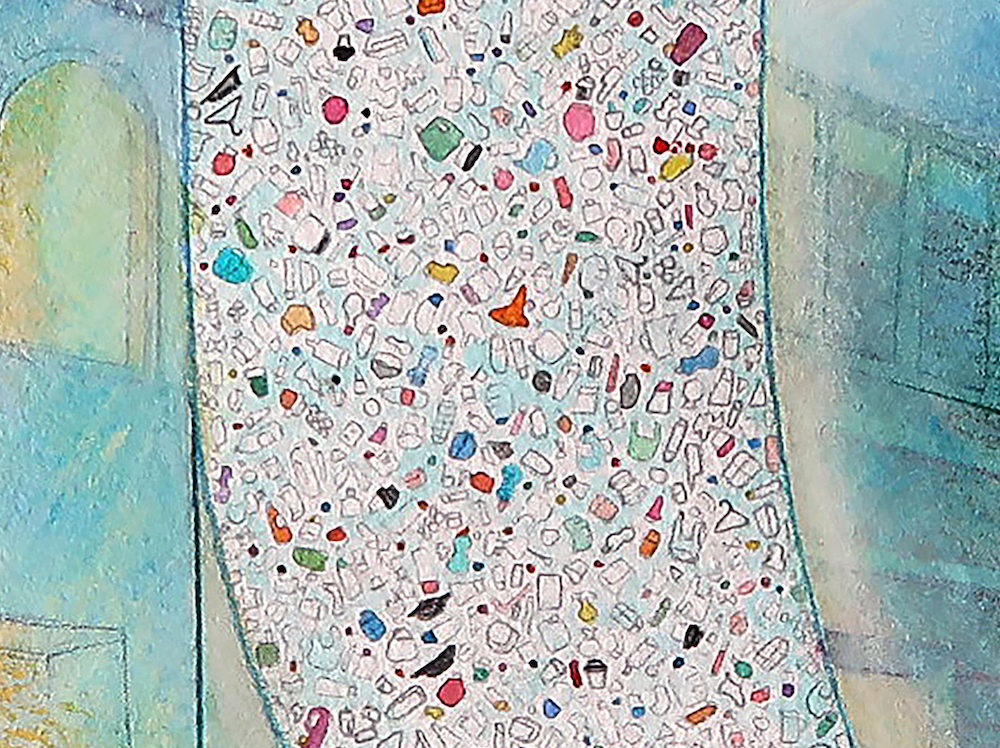
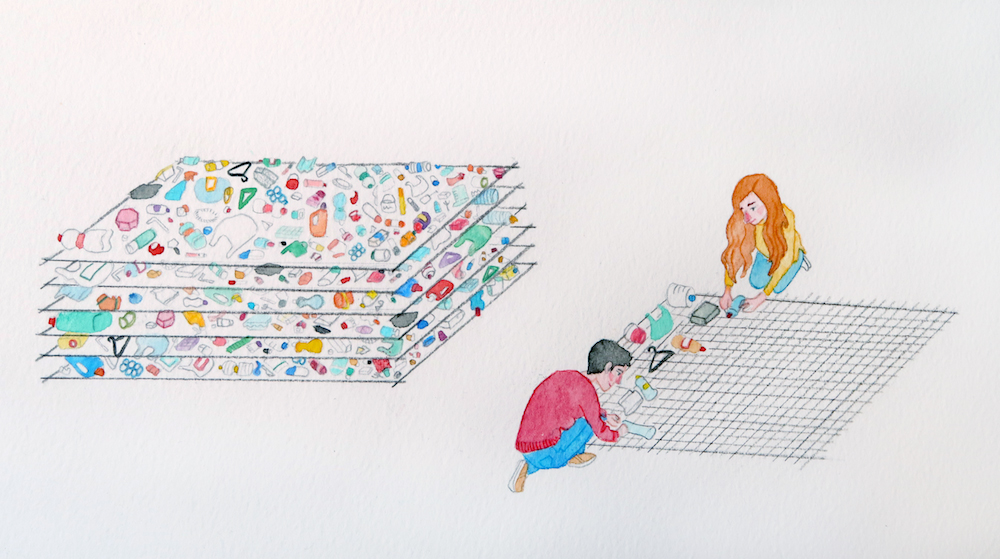


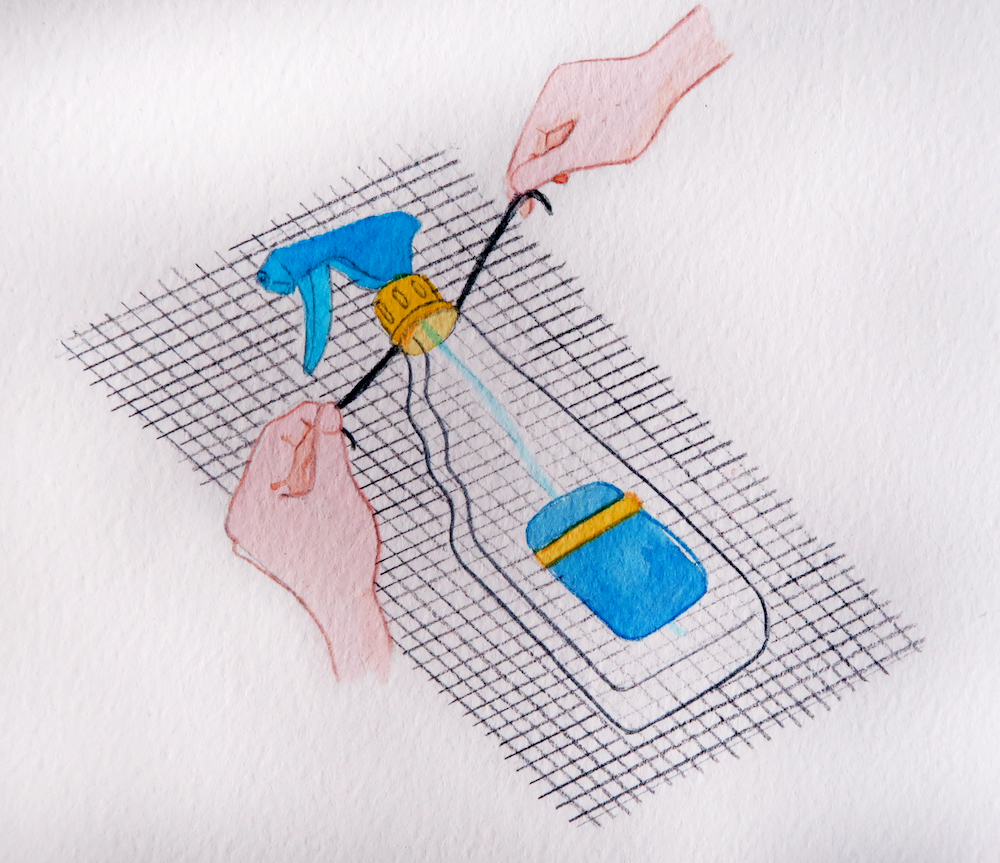
We have spent some time placing our artistic novelties over our heads. The reason for this is that, from our viewpoint, future wars on pollution will not only take place on water and land, but also in the sky, the only place that stays clear of plastic. However, it is also full of other toxic substances that are equally dangerous.
Thus, besides our Plastic Full Moon our Constellations for Polluted Skies and Permanent Constellations for Polluted Skies, we are introducing now Plastic Vomit, a cascading installation that will bury an entire building as it flows.
For its creation, we will make a curtain that will cover the facade of a high building on a main city street. The piece will be obviously made of plastic waste obtained from local consumers. It would also be lighted at night.
This miscellanea of plastic materials will be sewn to a metal mesh the size of the chosen building. It will be fastened to the top of it, and it will smoothly fall all the way down to the sidewalk.
This large lighted surface will turn into a luminous backdrop which will dramatically display the amount of plastic that invades us day to day. It will interfere with the city’s daily life with its annoying presence.
Passersby will be able to approach it. We would like to create an access into the building to complete this claustrophobic experience to recreate the asphyxiating feeling of staring and breathing through this unhealthy material.
We hope to materialize this idea soon.
illustrations: Marta Orse.
————–
Llevamos un tiempo en el que el escenario elegido para nuestras nuevas artísticas se sitúa sobre nuestras cabezas, la razón es que pensamos que las futuras guerras contra la polución, además de situarse en el agua y la tierra, habrá que batallarlas también desde el cielo, el único espacio que aun se mantiene libre de plásticos, pero que ya viene bien cargado de otros tóxicos igualmente peligrosos.
Así, a nuestras Luna Llena de Plásticos, Constelaciones para cielos contaminados y Constelaciones permanentes para cielos contaminados sumamos ahora Vómito de plástico una instalación en cascada, que al caer sepulta todo un edificio.
Para llevarla a cabo, crearemos una fachada cortina que cubrirá completamente el exterior de un edificio de gran altura de una calle principal de una ciudad. La pieza se hará por supuesto con deshechos de plásticos consumidos localmente, y también estaría iluminada por la noche.
Materiales plásticos de todo tipo, se coserán a una malla metálica del tamaño exacto del edificio elegido, e irá fijada a la parte superior cayendo limpiamente hasta llegar a la acera.
Esta gran superficie iluminada se convertirá en un telón de fondo luminoso que visualizará de manera dramática la cantidad de plástico que nos invade e interferirá con su presencia molesta en la vida cotidiana de la ciudad.
Los viandantes podrán acercarse y sentirla y nos gustaría que se pudiera acceder al interior del edifico para completar una experiencia claustrofóbica, en la que sentir la asfixia que produce mirar y respirar a través de este material tan insano.
Ojalá pronto la veamos construida.
Ilustraciones: Marta Orse.

